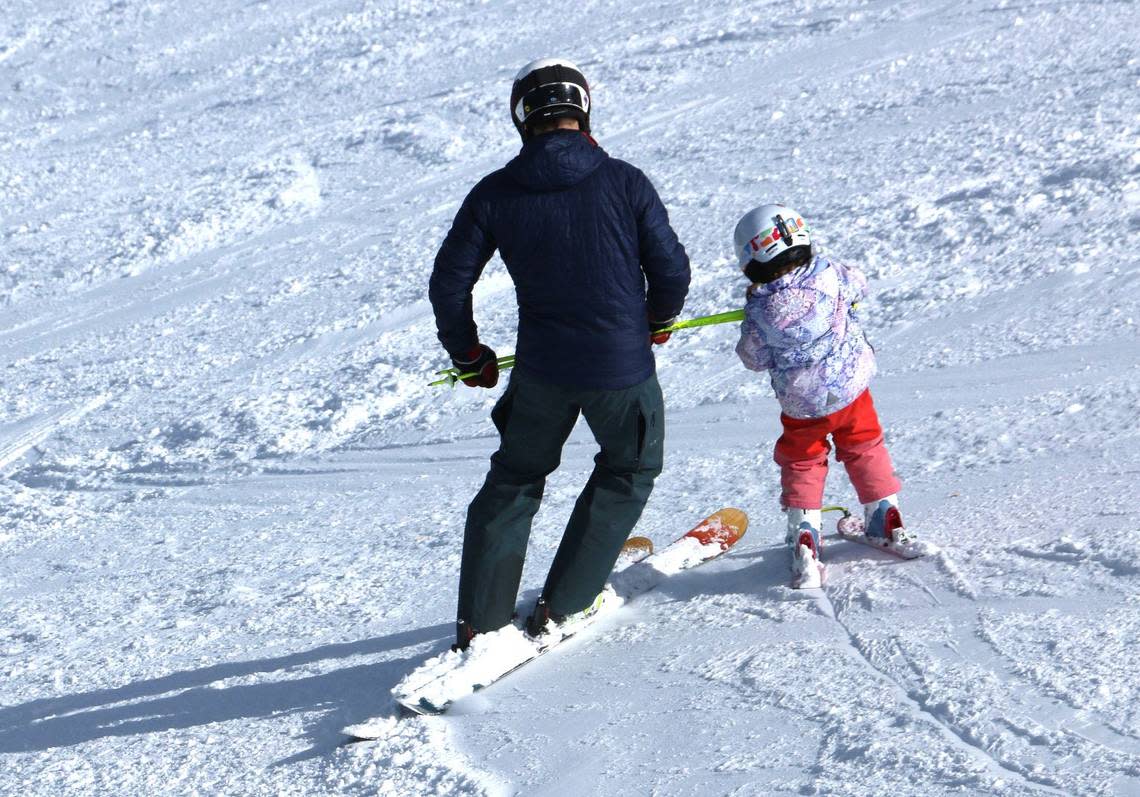Taking your old skis to the mountain? Here’s what you should do to avoid serious injury

Haven’t hit the slopes in awhile and want to grab your old skis from deep in your closet this upcoming snow season?
There’s an important step to take before risking serious injury.
“It’s definitely something that you should take to a shop and make sure those bindings are still good,” said Jason Telaro, shop service manager at REI in north Sacramento. “Basically, ski bindings have a loaded spring inside them. That’s what keeps your feet inside. ... (Over time) it gets to the point where, if you have a spring under tension in brittle plastic, it’s not a good combination.”
Much like ski and snowboard helmets, ski bindings should be checked or replaced every few years. Certified ski shops each year receive an official list of bindings that have gone through the indemnification process, which means those bindings are too old and cannot be repaired because their integrity often gets compromised.
Telaro’s advice: Get your bindings checked by a certified shop every few years to ensure they won’t break while in use. Retailers like REI will give the bindings a look for free and offer discounted mountings on new bindings if purchased in the store.
Generally, bindings land on the indemnification list six years after production.
“The six-year thing is more of an approximation because it varies from manufacturer to manufacturer,” Telaro said. “At some point, your ski bindings are deemed to be no longer safe to use by the manufacturer.”
Consider changing the bindings on skis as similar to getting an oil change or changing tires. It’s an investment of a few hundred dollars to save thousands in hospital bills — or worse.
Skis, meanwhile, can last a long time if they’re well cared for. Buying used skis to save some cash compared to new ones, which run about $550 to $800 at most shops, isn’t a bad idea, as long as the bindings are structurally sound.
With the new season just around the corner, many in the Sacramento area are considering new skis to upgrade their current set or take on a pricey new hobby. The historic snowfall around Lake Tahoe last year has generated buzz with resorts set to open in the coming weeks.
The basics of buying skis
The general rule of thumb is the length of a person’s skis should be equal to their height up to the individual’s chin or forehead, depending on their skill level. Longer skis are harder to control and go faster, while shorter skis offer more ease of use for those who are less experienced.
Many companies are starting to make wider skis, which are generally considered better for powder or deeper snow, while narrower skis are better for groomed or more packed conditions, which are more common on the East Coast. The addition of extra width comes with a higher price.
“They’re adding on quite a bit of money because they’re giving you more surface area and a little bit more ski,” said Kevin Clark, manager of Clark’s Snow Sports in Rancho Cordova. “And it does help with lifting you up from deep powder, that’s for sure. But sometimes because they are wider, they can be a little bit slower edge to edge as you’re trying to rotate those.
“But new skis are so versatile and user friendly that, even though they’re wider, it seems like everyone really seems to love them.”
Ski’s also have different bends, which is called camber and rocker. According to REI.com, camber and rocker describe the curve of a ski or snowboard when you look at them from the side. Skis and snowboards with camber have midsections that arch off the snow slightly when unweighted, while skis and snowboards with rocker have midsections that rest on the snow and tips and tails that curve up.
“That’s just to provide you with extra clearance for when you’re going through powder or snow that’s not so much cleared,” REI sales associate Cristian Ramirez said.
Skis come in all shapes and sizes. It’s best to speak with an expert about your skill level, type of skiing you prefer and snow conditions where you ski to make the best purchase.
What to know about buying ski boots
Ski boots vary in price, some as low as $200 and others as much as $800, which can make heads spin.
But the difference in price is not necessarily about the quality of the product. The more expensive boots are often the most stiff, which are designed to be responsive for fast skiers looking to make high-speed turns. Less experienced skiers would probably prefer less rigid boots, which are on the cheaper end of the spectrum.
The comfort and fit of the boots are important given how much time you’ll spend in them during a day on the slopes.
“I think boots in general are going to be something you want to invest the most in,” said Ramirez. “Because they are what connects the person to the skis. Generally, when you’re doing a boot fitting, beginners probably want a softer-flex boot because you want that comfort over performance. As you progress and you become more advanced, that gives you more performance over comfort. And for intermediates, you want that in between.”


